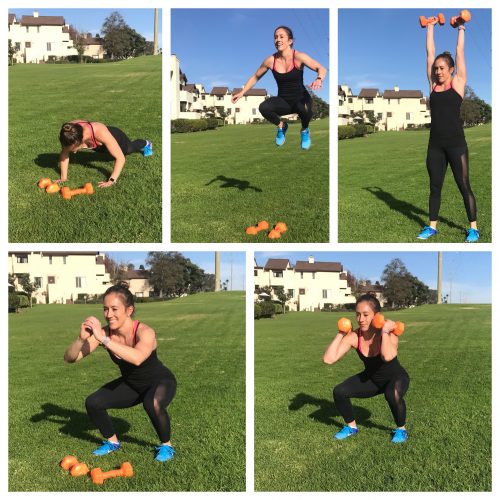The traditional HIIT protocol of work, rest, repeat may start to feel redundant if the workouts your personal training clients are doing lack variety in their movements, load, or even work-to-rest ratios. Consider incorporating “As Many Rounds As Possible” or, AMRAP protocols, to shake things up.
High-Intensity Interval Training (HIIT) is a great way to mix up your clients’ workout loads and work-to-rest ratios, and HIIT is also attributed to:
- Increases in O2 efficiency
- Higher VO2/cardiac output
- Improves both fast and slow twitch
- Burns fat as fuel
- Increase in lactate production, which causes the liver to recycle and use for energy rather than a waste product
Since its inception, HIIT protocols have been adapted to include a variety of work-to-rest ratios, such as 20 seconds on, 10 seconds off as seen in Tabata. The AMRAP is one example of a popular HIIT protocol that has been seen often in Crossfit workouts, but the work-rest ratio becomes a personal choice.
What is AMRAP Protocol?
Unlike traditional HIIT protocols that include a recovery between sets, AMRAP work does not consist of a prescribed work/recovery period industry-wide. Rather, AMRAP is designed as a sequence of exercises with a set number of repetitions to be done as many times as clients can within a set period of time. If the clock is still ticking, clients start back to the first exercise and make their way through the routine until the time is called.
AMRAP work can be set to a timer of anywhere from 5 up to 30 minutes. Because there is no recovery time built into the AMRAP set, some trainers have clients alternate between cardiovascular and strength exercises.
What to Target
Most AMRAP workouts include a wide variety of movements that challenge cardiovascular and muscular endurance. Exercisers should feel like they are working in the 90% range of their VO2 max. When personal trainer Laura Pelosi has her clients working an AMRAP, they perform compound movements that focus on big muscle groups.
AMRAP Preparation Phase
It’s important to include a great dynamic warm-up into the workout before clients begin an AMRAP protocol. Choose one that targets all of the muscles and joints that will be called upon in the kinetic chain during the workout phase and finishes with a bit of aerobic to anaerobic work.
Below are two examples of AMRAP workouts, but take creative liberty in the number of exercises, repetitions, and time allotted to complete the workout.
AMRAP Protocol 1:
| Work time | 6 minutes |
| Recovery time | 0 |
| Number of exercises | 3 |
| Number of repetitions | 10 |
| Number of cycles | As many as possible in the 6-minute round |
| Exercises | 100m run, sled push, dumbbell thrusters |
AMRAP Protocol 2 (courtesy of Jasmine Minor):
| Work time | 20 minutes |
| Recovery time | 0 |
| Number of exercises | 5 |
| Number of repetitions | 12 |
| Number of cycles | As many as possible in the 20-minute round |
| Exercises | thrusters, tuck jumps, burpees w/hand release push-ups, wall balls, air squats |
Note: Since there is no prescribed work-to-rest ratio when utilizing an AMRAP protocol, choosing appropriate compound exercises that vary is crucial. Target large, rotating muscle groups in a realistic amount of time for clients to complete within 90% of their VO2 max.
Try this protocol for yourself and then introduce it to clients you deem it appropriate for. Starting with a few minutes and working them up to longer stretches of time without rest is a good way to help their body adapt to the change if you have traditionally been using HIIT in a workout.




